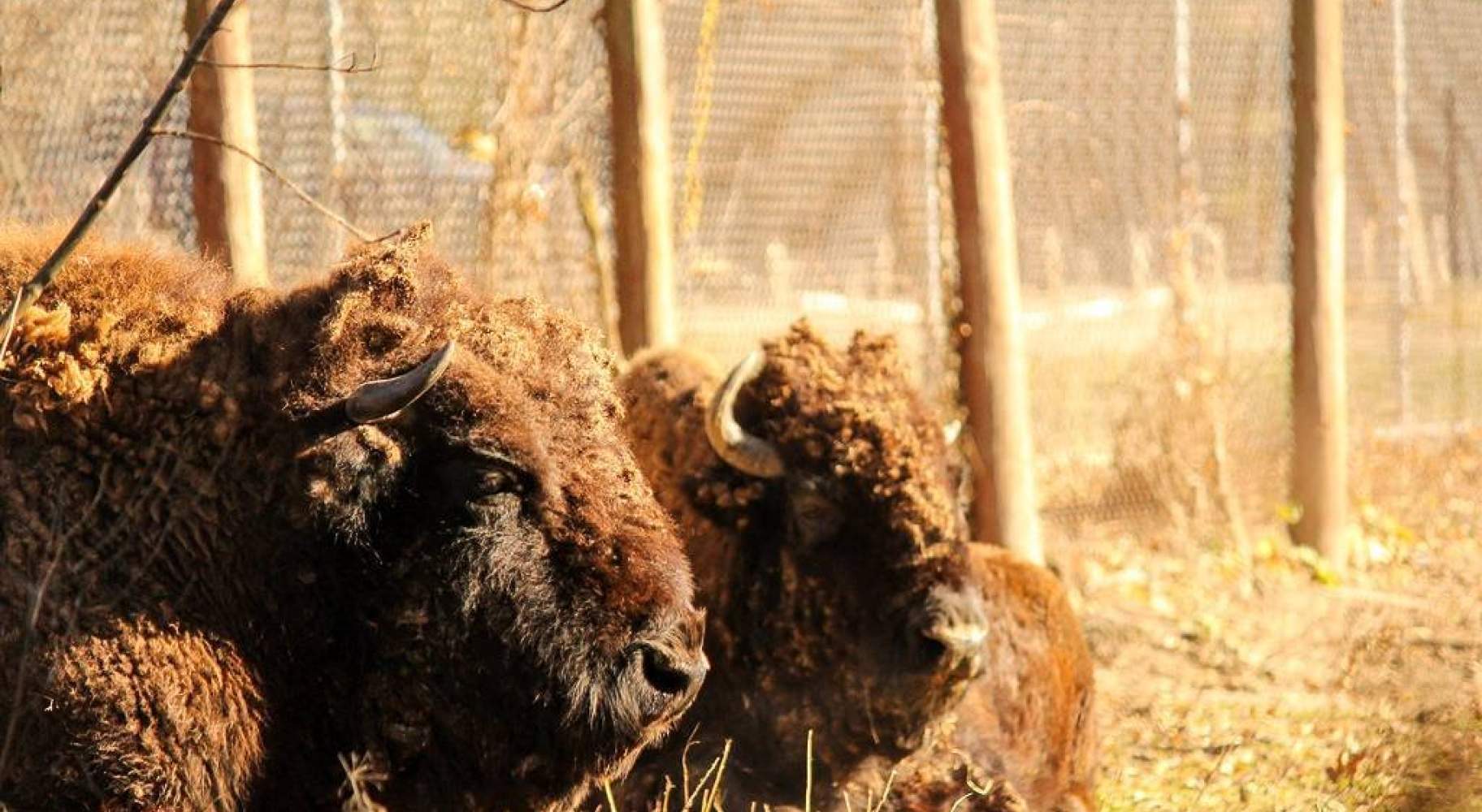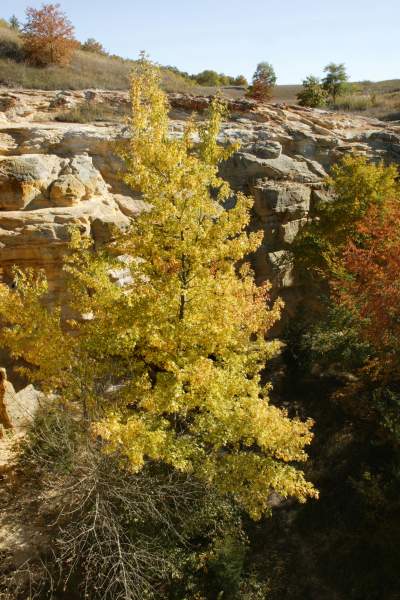Buffalo Rock State Park in Illinois is the pocket-sized baby sister in the Starved Rock, Matthiessen, and Buffalo Rock trio of State Parks that brings visitors to LaSalle County.
The park is a favorite family picnic stop, and a beautiful place to stretch your legs, with a mix of prairie and woodland, not to mention some world class land art (more on that later).

Discovering Buffalo Rock State Park
The park is 85 miles southwest of Chicago, near Ottawa and Utica.
The main access road to the park winds its way up a sandstone cliff festooned with ferns and moss, with some epic views of the Illinois River as you climb. If you prefer to get to the park on foot or on two wheels, the Illinois and Michigan Canal Trail is just across the road, so you could tie a visit into a longer hike across Illinois.
At the top of the bluff you’ll find the parking lot, and a large shelter with a stone fireplace, which you can reserve for events.

A Perfect Picnic Spot
The picnic areas are shaded with large oak trees, and well-equipped with picnic tables and cooking grills. On a sunny day you'll see groups grilling, kids running around on the grass, and people playing on the baseball diamond. It's a great place to come with a group of friends, though you'll be fine with a nice bagged lunch for a hike, too.

The Bison of Buffalo Rock
Buffalo Rock State Park has long been home to bison. You can see two there now, in a pen and grazing area near the baseball diamond and play area.
The bison are the inspiration for the Bison Weizen beer by local craft brewery Tangled Roots. $1 from every can sold goes to help pay for their care, so if you're in the mood for a brew, Bison Weizen is a great choice.

Buffalo Rock State Park Hiking
The park has two trails that join in a loop. The River Bluff Trail runs above the Illinois River with observation decks and panoramic river views. The Woodland Trail runs inland into the wooded area of the park.
These well-maintained trails make it an easy walk for less intrepid hikers, and a good pick for runners.


